- Excellent driving experience with a great ride and handling balance
- Non-intrusive and well tuned safety systems
- Great value for money, particularly the entry level model
- Central screen isn't as intuitive as it should be
- Rear seat and boot space isn't huge
- No driver information display or HUD is annoying
The past few years have been an overwhelmingly positive period for Volvo Cars Australia. Its sales have hit record levels thanks to arguably its strongest line up ever and now, the company is preparing for its next milestone: by 2026, every one of its cars sold locally will be all-electric. The first truly all-electric product that the company has launched, the 2025 Volvo EX30 is a very important car for the manufacturer. Is it the small electric SUV to buy? We were invited to the Australian launch in Adelaide to find out.

The EX30 is the brand’s smallest SUV ever and the first Volvo to use a platform developed by parent company Geely. It’s also the least expensive electric car the company sells in Australia, starting from an excellent $59,990 plus on-road costs, putting it in contention with a boatload of other EVs. Should it be the one that you take home?
How much does the 2025 Volvo EX30 cost to buy?
For now, there are three variants in the Australian EX30 range:
- Single Motor Extended Plus: $59,990 +ORC (around $68,000 drive away)
- Single Motor Extended Ultra: $66,290 +ORC (around $76,000 drive away)
- Twin Performance Ultra: $71,290 +ORC (around $81,000 drive away)
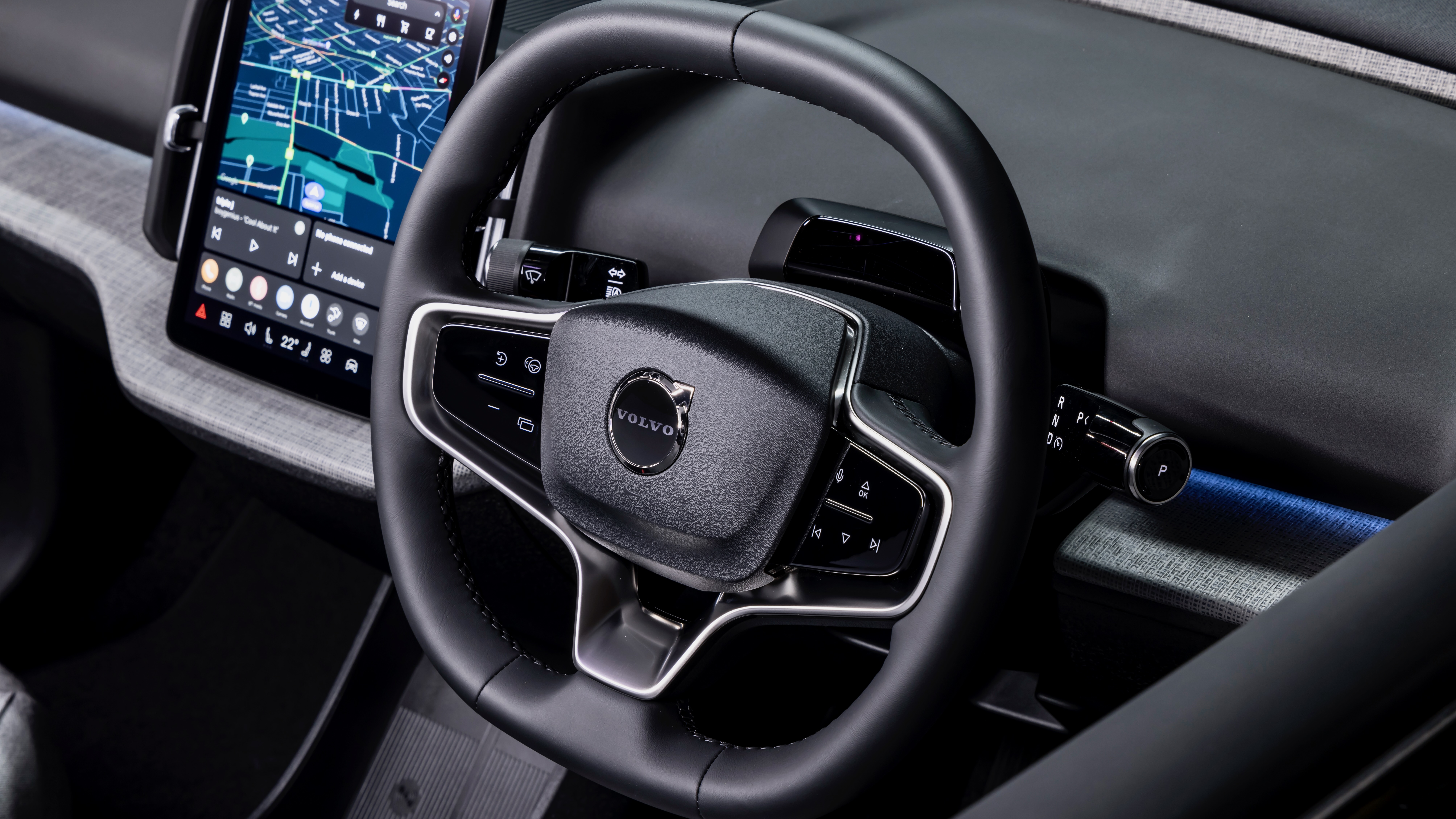
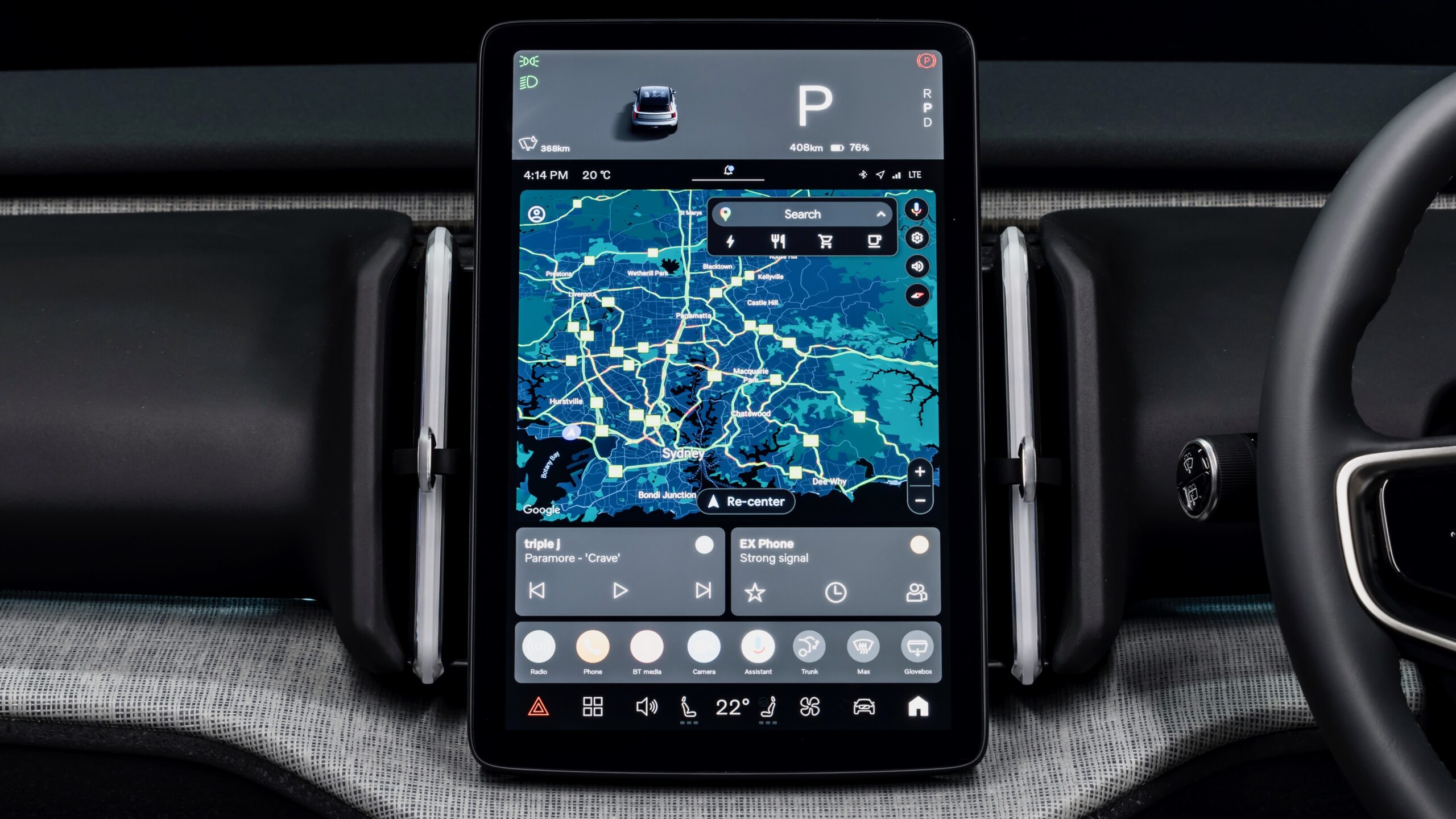


EX30 Single Motor Extended Plus standard equipment:
- 19-inch alloy wheels with a tyre repair kit
- Dusk-sensing automatic all-LED exterior lighting with front and rear daytime running lights
- Rain-sensing automatic wipers
- Black roof, spoiler and mirror caps
- Keyless entry and start with an NFC key and a smartphone app for access
- Electric tailgate
- Heated and auto-folding mirrors with puddle lamps
- Synthetic leather steering wheel
- ‘Nordico’ textile upholstery with interior ambience colour themes
- Dual-zone automatic climate control
- Heat pump
- LED interior ambient lighting
- 12.3-inch touchscreen with inbuilt 5G capability and over-the-air updates
- Google software, including Google Maps, Google Play Store and and Google Assistant
- Wireless Apple CarPlay
- DAB+ digital radio
- 1,040W Harman Kardon sound system with a sound bar at the front of the dashboard
- Wireless phone charger
- 4x USB-C charging ports
- Three-pin charging cable
EX30 standard safety equipment:
- Nine airbags (including a front centre unit and rear side units)
- Automatic emergency braking (AEB) with auto emergency steering, including vehicle, pedestrian, cyclist and scooter detection
- Adaptive cruise control with adaptive lane guidance and traffic jam assist
- Auto high beam
- Front- and rear cross-traffic alert
- Blind-spot monitoring
- Lane keeping assistance
- Driver attention monitoring
- Road sign recognition
- Door open warning
- Front and rear parking sensors
- Low-speed rear auto braking
- Reversing camera
- Auto-dimming exterior and interior mirrors
- Alarm
The EX30 is yet to be tested by Euro NCAP or ANCAP for safety, but the mechanically related Smart #1 received a five-star Euro NCAP rating in 2022 and given Volvo’s reputation for safety, we expect the same rating for the EX30 when it’s eventually tested.



EX30 Single Motor Extended Ultra adds:
- Heated steering wheel
- 360-degree camera with a 3D view
- Automatic parking
- Panoramic glass roof
- Electric front seat adjustment including lumbar
- Heated front seats
- Tinted rear windows
EX30 Twin Performance Ultra adds:
- 20-inch alloy wheels




EX30 colour range (all no-cost):
- Cloud Blue
- Moss Yellow
- Onyx Black
- Vapour Grey
- Crystal White
Depending on the exterior colour chosen, the EX30 is available with ‘Indigo’ (navy blue), ‘Breeze’ (light blue), ‘Mist’ (light grey) and ‘Pine’ (dark green) interior colour options.
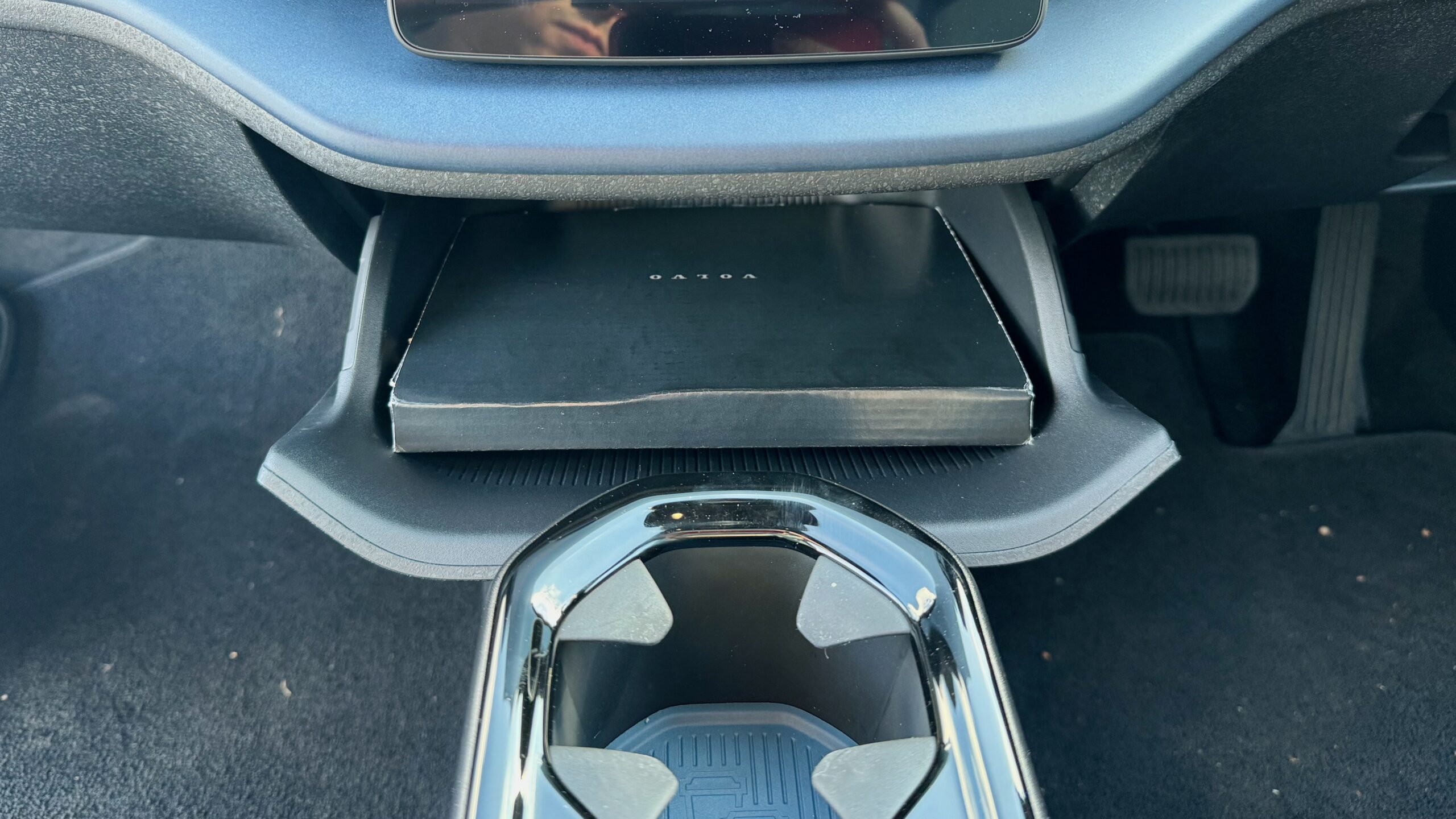



As for competition, there’s a wide range of cars that we think will be cross-shopped against the EX30. In terms of size and range, we think the Hyundai Kona Electric Extended Range (505km of range and priced from $58,000 plus on-road costs) is the main rival to the EX30, and considering the entry level EX30’s extra performance, higher level of fit and finish and extra standard equipment, we think it’s great value for money. Other cars likely to be cross-shopped include the Renault Megane E-Tech (from $64,990 +ORC) and top-selling Tesla Model Y ($60,900 +ORC).
How far can the 2025 Volvo EX30 travel on a charge?
Based on parent company Geely’s ‘SEA’ platform, the Volvo EX30 will be offered with a single ‘long range’ battery option in Australia: a 69kWh (64kWh useable) lithium ion unit that gives a claimed 462km of range (WLTP) in the single motor variant and a claimed 445km of range in the dual motor variants. Overseas, a smaller 54kWh battery with around 350km of range is offered, though that’s yet to be confirmed for Australia.




The EX30 can be charged at up to 153kW on a DC charger for a claimed 10 to 80 per cent charge in 30 minutes. While on the launch drive we weren’t able to get proper efficiency readings and will get more accurate efficiency figures when we test the Volvo EX30 on our local testing regime.
What is the 2025 Volvo EX30 like to drive?
Performance, regardless of EX30 chosen, is brisk or even stupidly fast. Even in the entry-level single motor, 200kW of power and 343Nm of torque is on offer, while in the dual motor variants, an extra front motor is added for huge 315kW and 543Nm outputs. The single motor EX30 sprints to 100km/h in just 5.3 seconds, while the dual motor is the fastest Volvo ever with a claimed 0-100km/h sprint time of just 3.6 seconds.
We were behind the wheel of the single motor car for the first part of the launch program and it gives more than enough performance for most buyers, but the dual motor Ultra is just insanely fast, even at speed. For those wanting to tow with their EX30, it can tow a 1,600kg braked trailer.
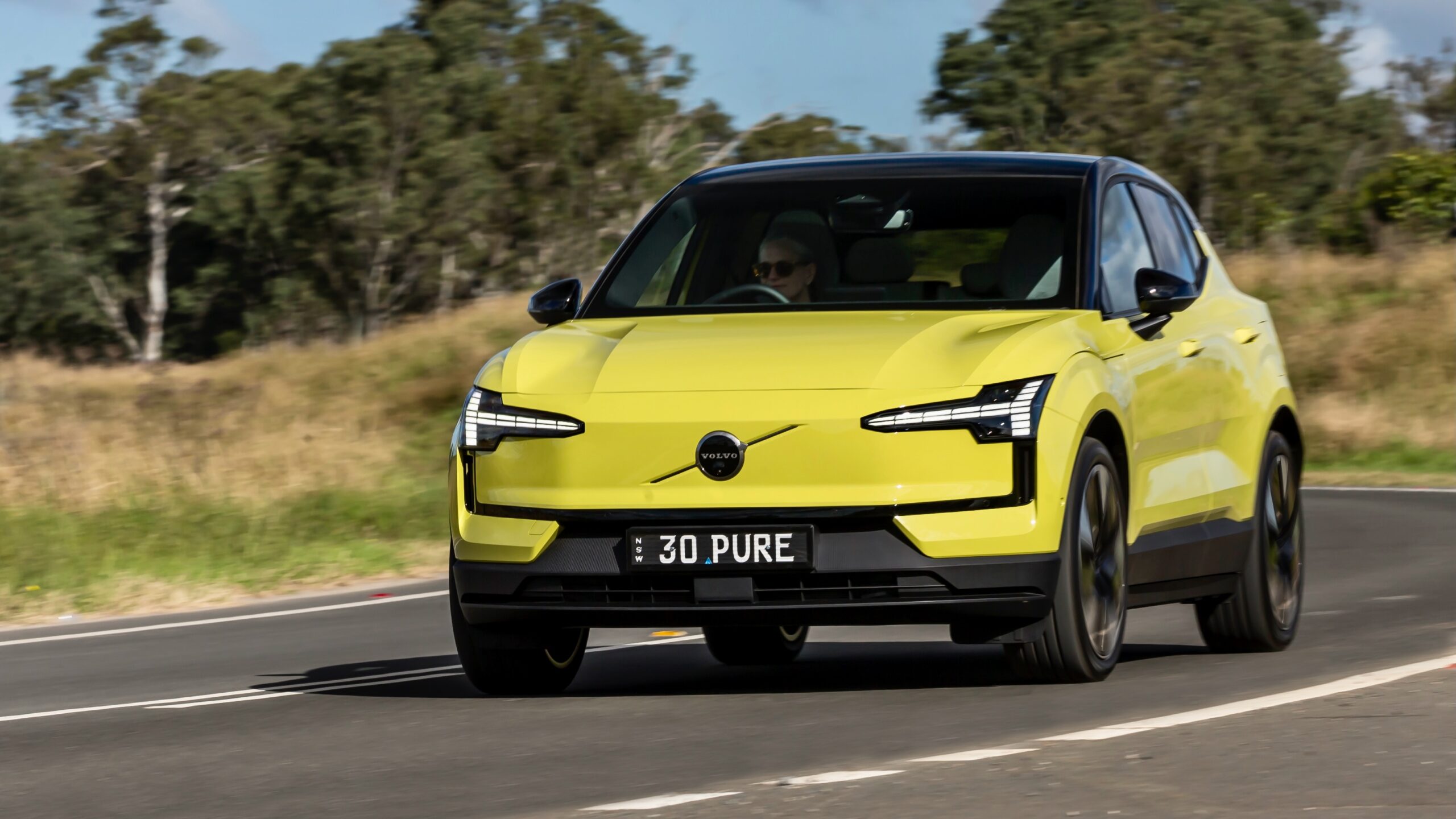



Based on Geely’s ‘SEA’ platform, the 2024 Volvo EX30 is the first rear-wheel drive Volvo product in decades. Measuring 4,233mm long, 1,838mm wide, 1,549mm tall and riding on a 2,650mm long wheelbase, the EX30 is not a large car – in fact, its overall dimensions are similar to the Mazda CX-3 and 33mm shorter overall than the last Volvo small car: the C30 hatchback. While it’s no lightweight at minimum 1,810kg (tare), the EX30 hides its weight well on the road and thanks to features like five-link independent rear suspension, it rides and handles quite well.
To put it simply, the EX30 is great to drive. As you’d expect for a Volvo, it feels quite solid on the road and has a very reassuring feel when behind the wheel. It was easy to get a comfortable driving position and the seats offered a lot of adjustment. The adjustable steering has a weight for everyone – our personal favourite was the firm setting – while the ride is excellent, despite the large wheels. It isn’t too firm to be uncomfortable but has a nice balance of comfort and good handling ability. The road noise levels in the EX30 are also quite low despite the large wheels.



As for active safety equipment, as you’d expect for a Volvo, it’s all pretty good and nicely unobtrusive on the road. When everything is engaged the lane departure warning and all other safety systems feel rather refined. Nothing is too aggressive or in your face like some safety systems can be. However, it’s not all perfect, and the big criticism we had with the EX30 is how to access the safety features in the central screen. Like a lot of features in the EX30, it’s all in a setting menu, which is difficult to find on the move.
While we’re complaining, another issue with the EX30 is the Tesla-like central-mounted speedometer. There’s no driver’s display in the car, nor a head-up display, and the speedometer is mounted on the central screen to the left of the driver’s field of vision of the road ahead. It can be a little distracting and because of that, we would love to see a heads up display implemented. But aside from a few tech issues, the driving experience of the EX30 is excellent.
How luxurious is the 2025 Volvo EX30?
The cabin of the EX30 is typically modern Volvo: great quality, full of tech and yet, also with a sustainable side thanks to the recycled and leather-free materials on the inside. The trims used through the EX30’s cabin are very nice to touch. The metal door handles, as well as high quality switchgear, make the interior feel far more expensive than the starting price suggests. Most of the interior pieces are made from recycled materials, but you’d not know that sitting in it as everything is interesting to the eye.

The interior storage in the EX30 is quite good, despite there not being a typical centre console or even a real glovebox. There is a handy wireless charger underneath the screen, a sliding tray underneath the centre console with cup holders or storage, a small electronically-lowering glovebox and more storage underneath that, including a false cover with another tray underneath with two USB-C ports.
Because there are no speakers in the doors, the door bins are also quite generous.

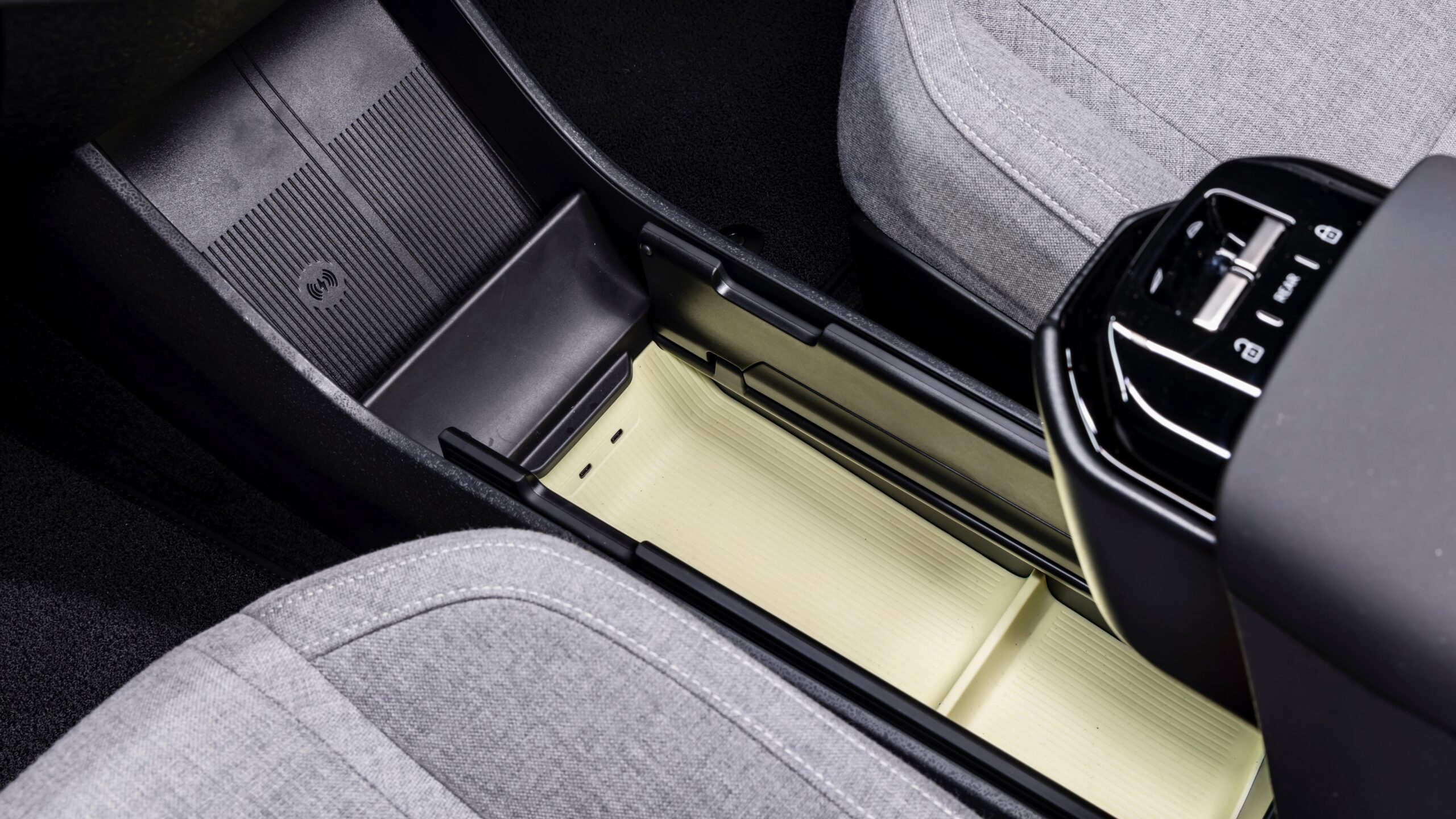


Centre of the EX30’s cabin is a 12.3-inch portrait touchscreen that – like Tesla products – controls almost everything about the car. It features the same Google features like Google Maps, the Google Play Store to download apps and the Google Assistant voice control system that other Volvo products have featured for the past few years, but the infotainment software itself is all-new. It also features wireless Apple CarPlay smartphone mirroring, as well as DAB+ digital radio functionality.
While the aesthetic of the screen is modern and the quality is excellent, we found the it a little difficult to use, especially on the move. Once parked we could figure everything out, but it did take some playing around and getting used to. If you’re buying one, make sure you learn the major features before driving. It’s all part of Volvo’s new minimalist take on interior design – which no doubt saves the company money too – that adds to the sustainability of the EX30. There are no mirror controls, for example, with the adjustments done through the screen.



The EX30 has an interesting speaker layout with its singular Harmon Kardon sound bar at the base of the windscreen, like you’d find in a home stereo. It pumps out an impressive 1,040W of power and while the sound quality was quite good and the bass was impressive, you could definitely tell that it was coming from the front and the centre, with not much surround available.
Where the EX30 is not that impressive is in its rear space, which is where the small dimensions come into play. The rear seat legroom is tight, especially for taller people, though headroom is pretty good – even with the panoramic sunroof that’s fitted to the Ultra models. The rear seat lacks both air vents and a central armrest, though it has map pocket, door pockets and a central tray with two USB-C charging ports – and, curiously, the window controls (like the front seat). There are also three top-tether points and two ISOFIX points for child seats.
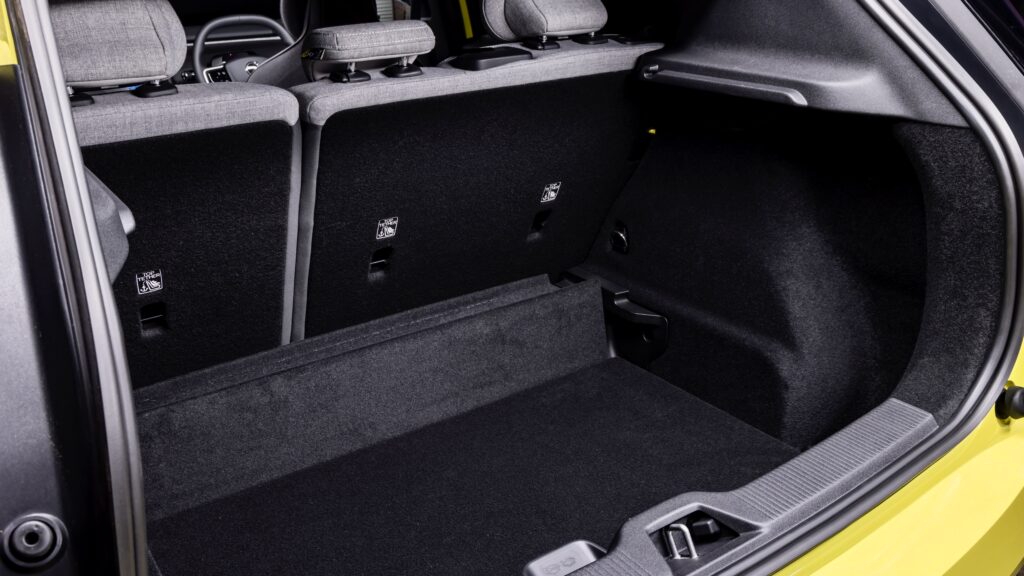

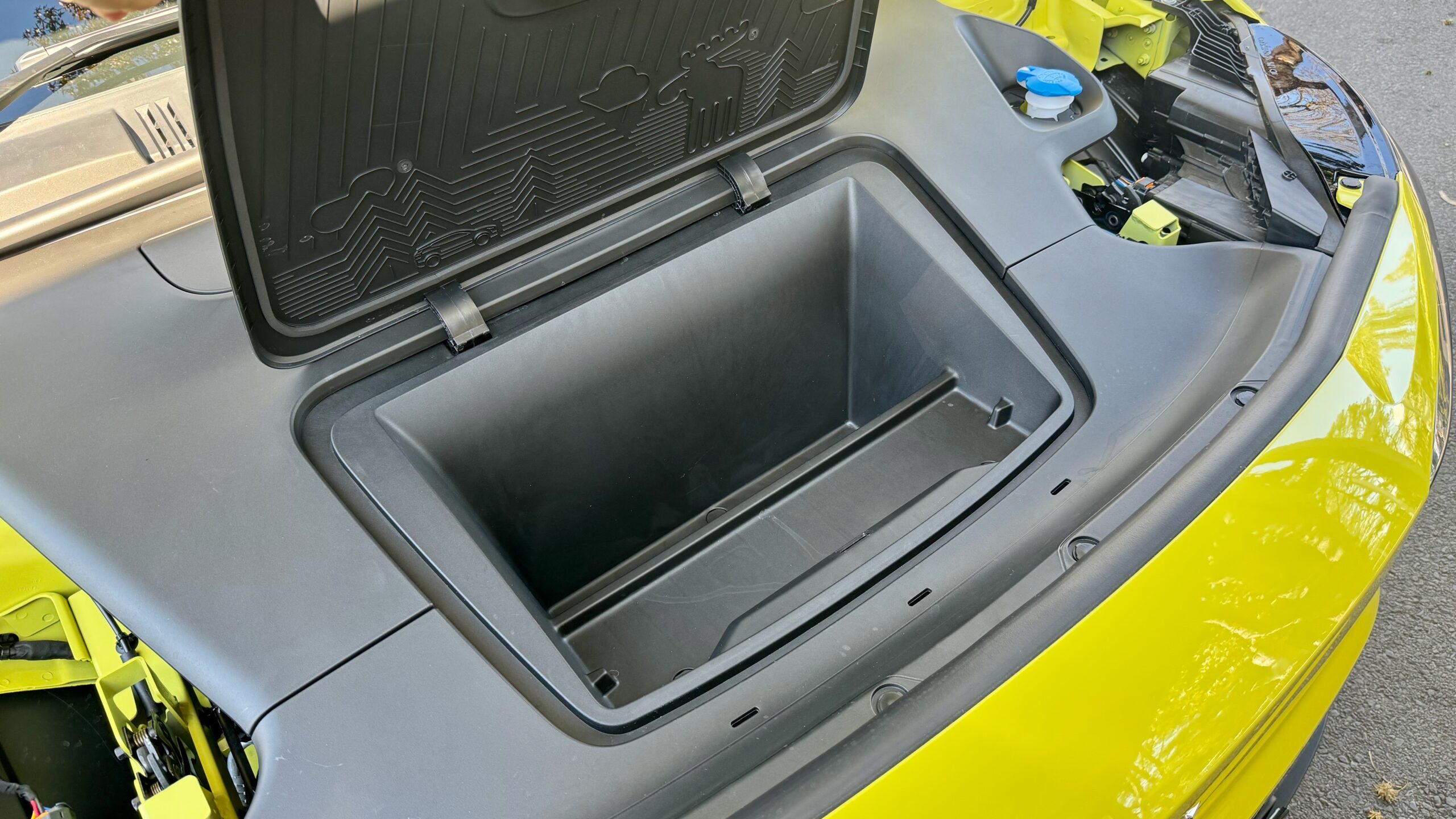
Opening the power tailgate of the EX30 reveals 317L of cargo space with the seats up and 904L with the rear seats folded down. The boot has a few handy features like a dual-level floor, side storage and even a graphic on the top of the tailgate giving the EX30’s dimensions so that owners can check if items will fit inside. There is also a small 7L frunk, which is handy for storing charging cables or other small items. As with most other EVs on the market, there’s no spare wheel.
What warranty covers the 2025 Volvo EX30?
As with other new Volvo products, the EX30 is covered by a five-year/unlimited km warranty with an eight-year warranty on the battery and eight years of roadside assistance.
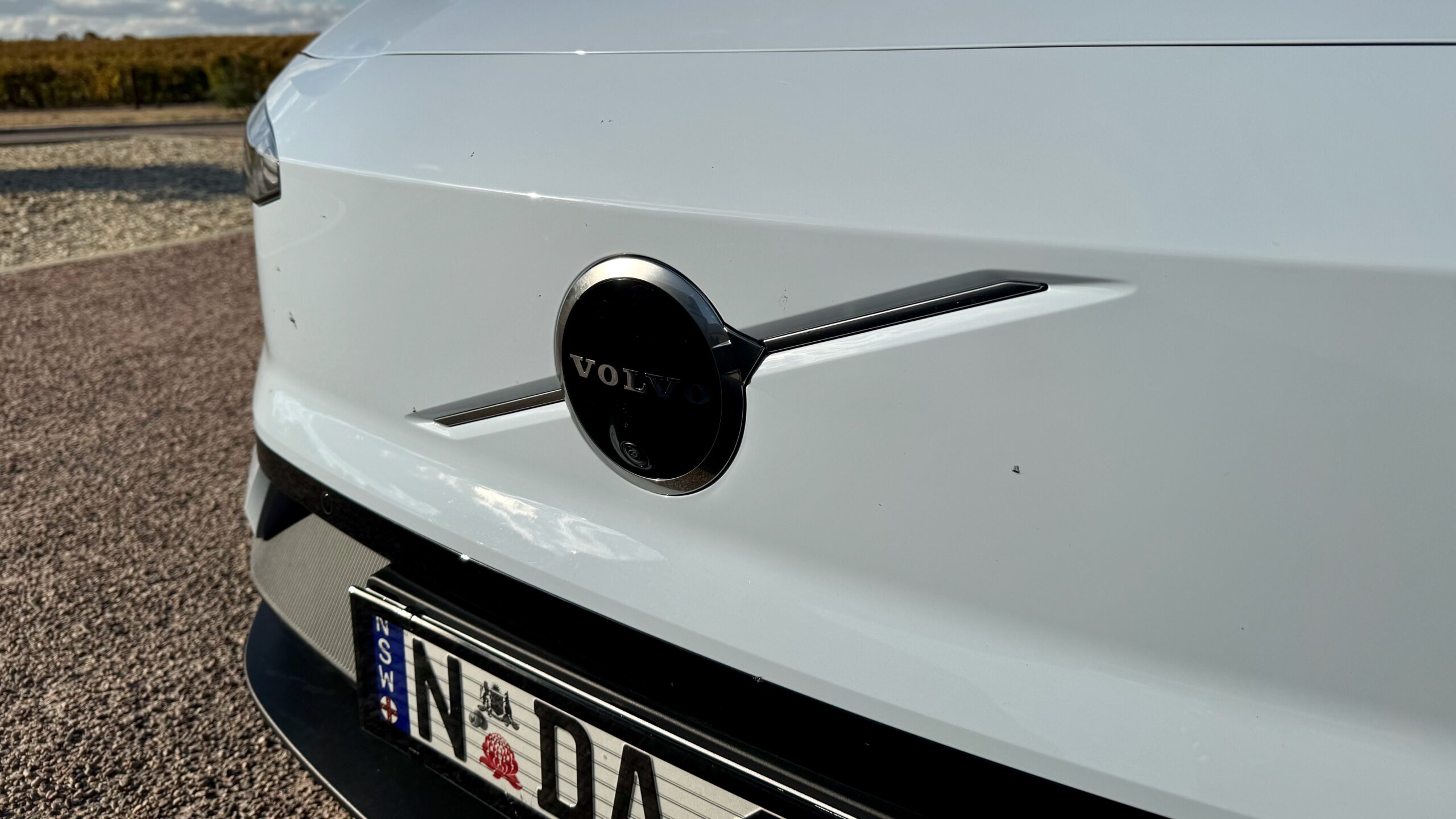
The EX30’s service intervals are once every 24 months with service plan pricing yet to be confirmed.
Should I buy a 2025 Volvo EX30?
Putting it simply, we quite enjoyed our time with the 2025 Volvo EX30 and think that it will continue Volvo Cars Australia’s recent couple of years’ success. Nothing about it says entry-level despite being the cheapest EV the company now sells locally, and it feels just as well-engineered as its larger siblings. The driving experience is more playful than most Volvo products, and even the entry-level single motor car is brisk for performance – let alone the loony twin-motor variant. It’s also got character, which is a quality that we love here at DiscoverAuto.
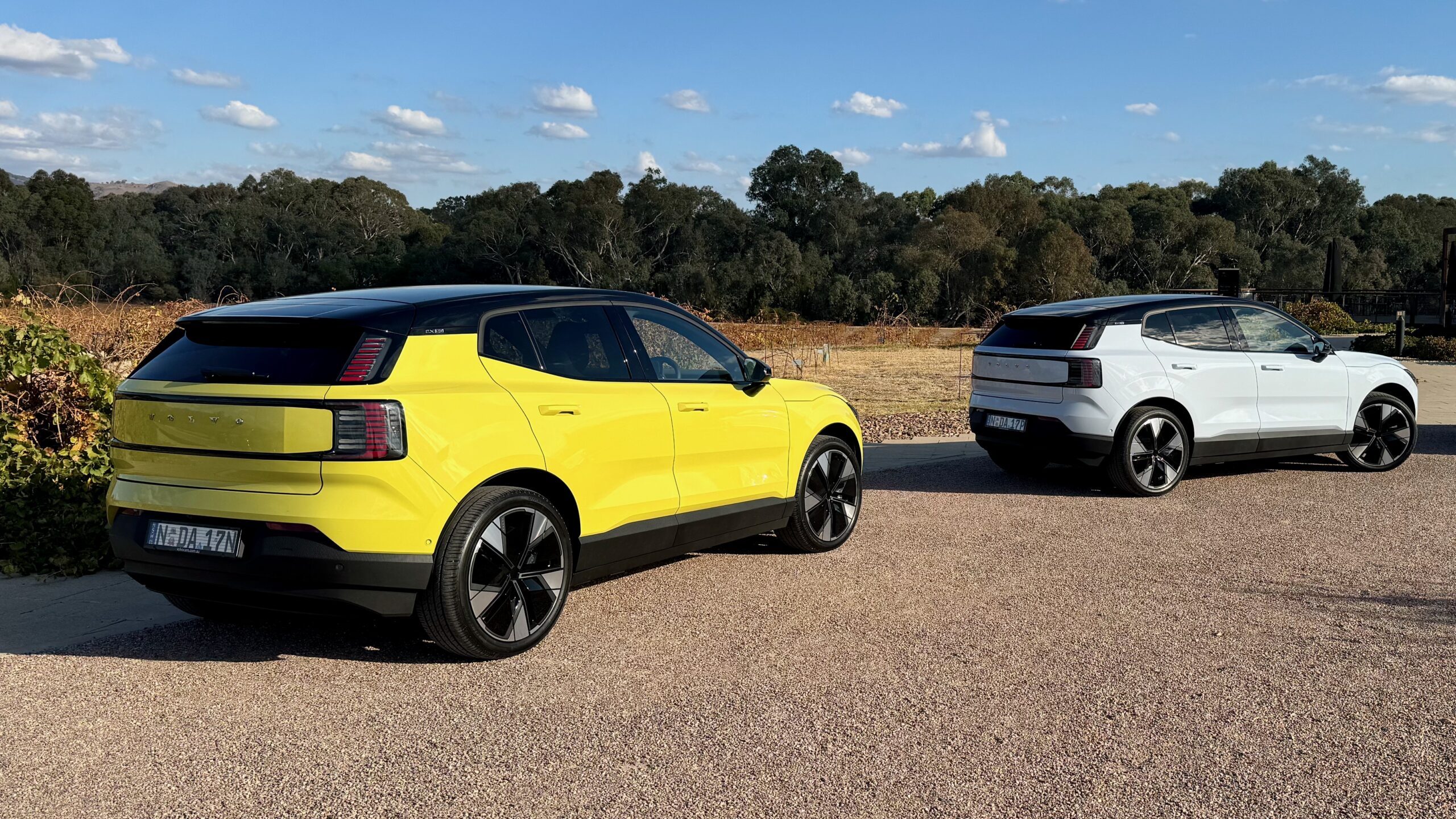
While we’re yet to extensively test it, at the moment there isn’t too much that needs revision with the EX30: the touchscreen’s menu systems are too complicated to use (especially at speed) and there’s no separate speedometer screen or head-up display. In addition to that, it’s not the biggest car so check if it meets your needs before committing. Those issues aside, our first taste of the EX30 has been a very positive one and we look forward to spending more time in it.

Leave a Reply